|
By accessing or using The Crittenden Automotive Library™/CarsAndRacingStuff.com, you signify your agreement with the Terms of Use on our Legal Information page. Our Privacy Policy is also available there. |

Senegal to Park Colorful ‘Cars rapide’ Permanently
|
|---|
|
|
Senegal to Park Colorful ‘Cars rapide’ Permanently
Ricci Shryock, VOA News
21 June 2016 (4:29PM)
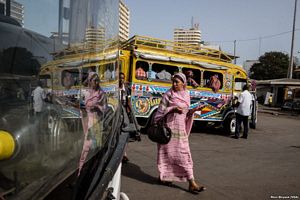 A pedestrian passes a colorful car rapide, with her image reflected in the windshield of a modern Chinese brand King Long bus. Authorities plan to phase out cars rapide by late 2018. A pedestrian passes a colorful car rapide, with her image reflected in the windshield of a modern Chinese brand King Long bus. Authorities plan to phase out cars rapide by late 2018.
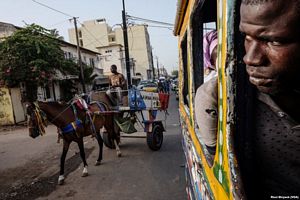 A passenger looks out the window of a car rapide as a horse cart passes in Dakar, Senegal. (R. Shryock/VOA) A passenger looks out the window of a car rapide as a horse cart passes in Dakar, Senegal. (R. Shryock/VOA)
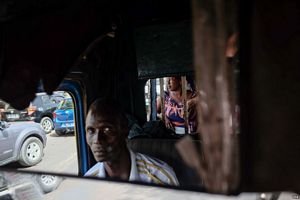 Moussa Sock has been driving a car rapide for nearly 20 years. The Senegalese government plans to train car rapide drivers and apprentices to operate newer buses. (R. Shryock/VOA) Moussa Sock has been driving a car rapide for nearly 20 years. The Senegalese government plans to train car rapide drivers and apprentices to operate newer buses. (R. Shryock/VOA)
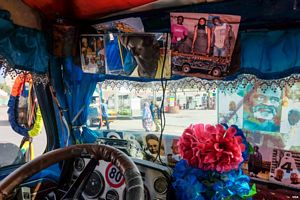 Driver Saliou appears in the mirror of his minibus. Its interior has typical decorations, such as pictures of Senegalese religious leaders and plastic flowers. (R. Shryock/VOA) Driver Saliou appears in the mirror of his minibus. Its interior has typical decorations, such as pictures of Senegalese religious leaders and plastic flowers. (R. Shryock/VOA)
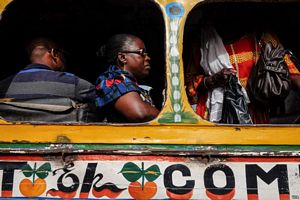 Christina, at center, say she prefers to travel by cars rapide, calling them faster than bigger and more modern buses. (R. Shryock/VOA) Christina, at center, say she prefers to travel by cars rapide, calling them faster than bigger and more modern buses. (R. Shryock/VOA)
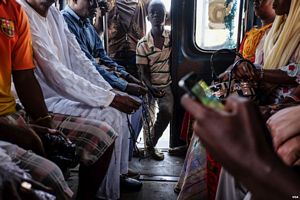 Among passengers on their mobile phones and clutching prayer beads, an apprentice stands at the back holding money he has collected as fares. (R. Shryock/VOA) Among passengers on their mobile phones and clutching prayer beads, an apprentice stands at the back holding money he has collected as fares. (R. Shryock/VOA)
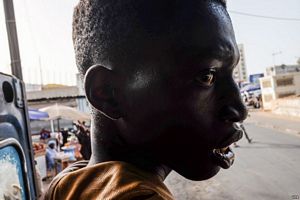 An apprentice hangs off the back of a minibus, directing passengers and taking payments for rides. (R. Shryock/VOA) An apprentice hangs off the back of a minibus, directing passengers and taking payments for rides. (R. Shryock/VOA)
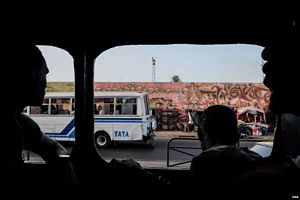 Passengers look out the window of a car rapide as an Indian-made Tata passes in Dakar, Senegal. (R. Shryock/VOA) Passengers look out the window of a car rapide as an Indian-made Tata passes in Dakar, Senegal. (R. Shryock/VOA)
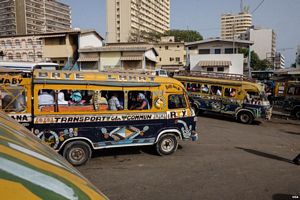 The car rapide has become a symbol for Senegal's capital, but the government plans to park them for good by late 2018 to modernize transportation and ease pollution. (R. Shryock/VOA) The car rapide has become a symbol for Senegal's capital, but the government plans to park them for good by late 2018 to modernize transportation and ease pollution. (R. Shryock/VOA)
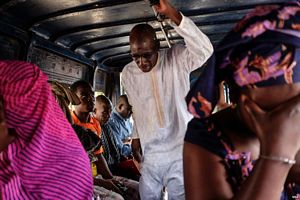 Urban transport officials say Dakar residents need updated transportation options, but some still prefer colorful minibuses to their bigger, modern rivals. (R. Shryock/VOA) Urban transport officials say Dakar residents need updated transportation options, but some still prefer colorful minibuses to their bigger, modern rivals. (R. Shryock/VOA)
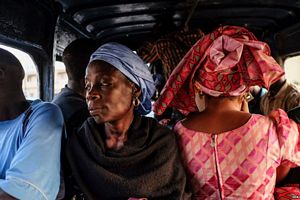 Passengers ride in a car rapide in Dakar, Senegal. (R. Shryock/VOA) Passengers ride in a car rapide in Dakar, Senegal. (R. Shryock/VOA)
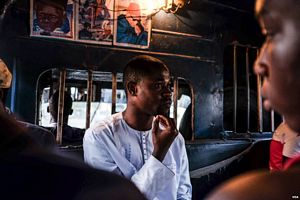 A passenger sits below a photo of a local religious leader. Drivers and owners decorate minibuses with photos of these 'marabouts,' reflecting which Muslim brotherhood they belong to in Senegal. (R. Shryock/VOA) A passenger sits below a photo of a local religious leader. Drivers and owners decorate minibuses with photos of these 'marabouts,' reflecting which Muslim brotherhood they belong to in Senegal. (R. Shryock/VOA)
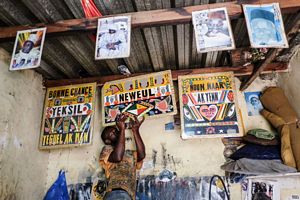 Neyoo Diallo paints cars rapide, the iconic minibuses that barrel down Dakar's roadways. The decorations have evolved over the years and have cultural significance. (R. Shryock/VOA) Neyoo Diallo paints cars rapide, the iconic minibuses that barrel down Dakar's roadways. The decorations have evolved over the years and have cultural significance. (R. Shryock/VOA)
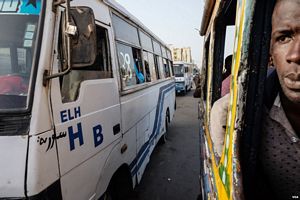 An Indian-made Tata passes a car rapide in Dakar, Senegal. Authorities are planning to retire the colorful minibuses by late 2018. (R. Shryock/VOA) An Indian-made Tata passes a car rapide in Dakar, Senegal. Authorities are planning to retire the colorful minibuses by late 2018. (R. Shryock/VOA)
|
DAKAR, SENEGAL—Brightly painted
Cars rapide are a hallmark of Senegal’s capital, offering residents a cheap way to get around the city since 1976. But the privately owned minibuses are scheduled to be parked for good.
Cars rapide are being phased out as part of a plan to modernize urban transportation, says Alioune Thiam, general director of Dakar’s Executive Council on Urban Transport, speaking on the street.
As of December 2018, the minibuses no longer will circulate in the crowded capital city, whose population is estimated at 3 million. The minibuses are part of cultural heritage, Thiam says, but they don’t have the comfort and safety of modern transport. And they pollute a lot, raising environmental concerns.
As if on cue, the tailpipe of the
Car rapide just behind him exhales a giant plume of exhaust.
In 2005, Senegal began rolling out new buses, such as the Indian-made Tatas and the Chinese brand King Longs. It has introduced over 1,300 of these modern buses. They are bigger and more comfortable than
Cars rapide, but they, too, are often packed during rush hour, a testament to Dakar's exploding population.
But some passengers still prefer the
Cars rapide.
One rider, Christina, says they are faster than the Tatas.
With the changeover, riders will also have to deal with increased fares. A ride across town that now costs about 25 cents (150 CFA) will go up to about 35 cents (200 CFA).
Of course, passengers are not the only ones who will be affected.
Moussa Sock has been behind the wheel of a
Car rapide for nearly 20 years. I love this job, he says. It’s my work and I’ve done it since I was very young.
Authorities say Moussa won’t lose the job he loves. The state plans to bring on
Car rapide drivers and apprentices to operate the new buses after the changeover in 2018. And some people are even suggesting that artists give the new buses a
Car rapide-style makeover.
They have a distinctive look. The
Cars rapide are painted in bands of blue, white and yellow and adorned with colorful lettering and images.
Neyoo Diallo, a
Car rapide artist, explains the iconography is far from random.
At the front of the
Car rapide, we put two eyes, like a man has two eyes, he says. We paint horses because before there were cars, even our spiritual guides had horses, so that’s why we put those.
For now, the
Car rapides still barrel through Dakar’s streets. But they, too, will soon be in this city’s rearview mirror.


















